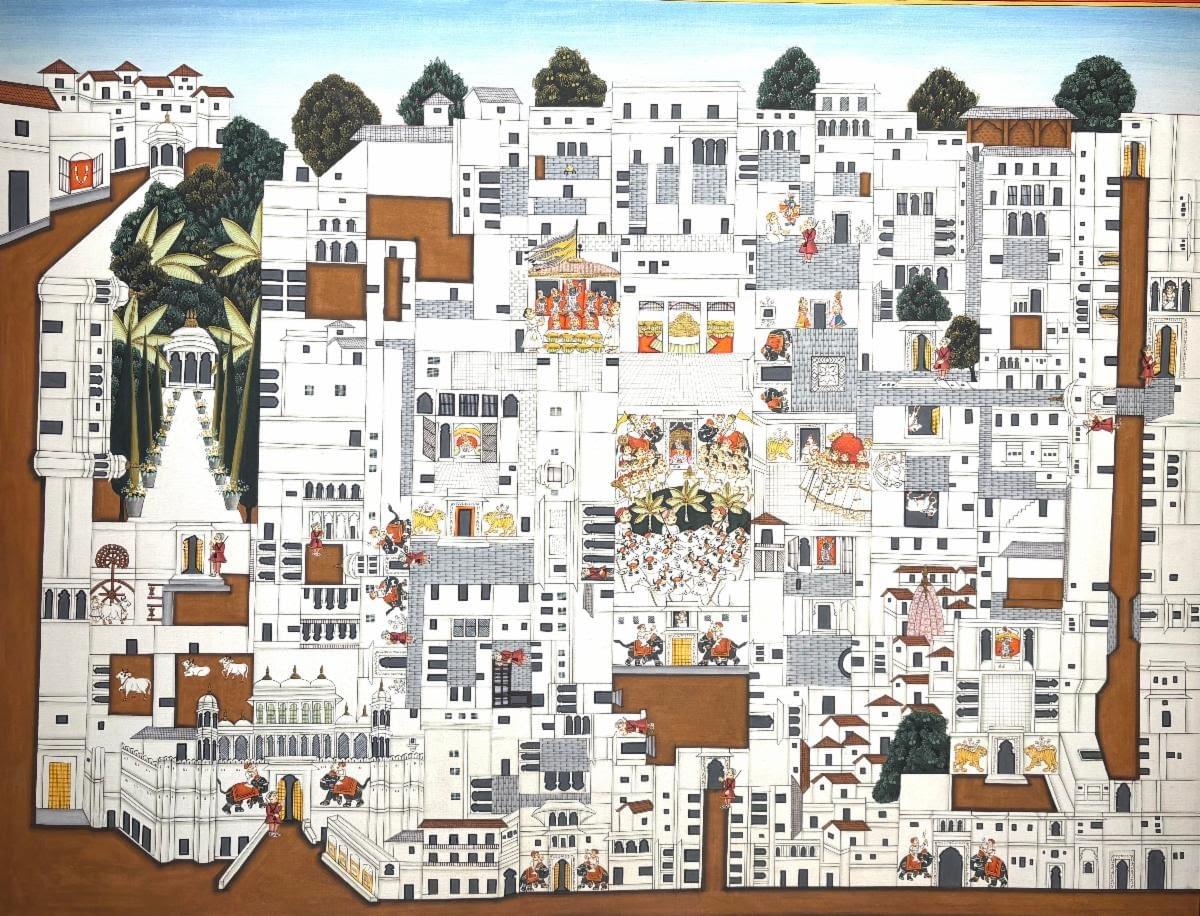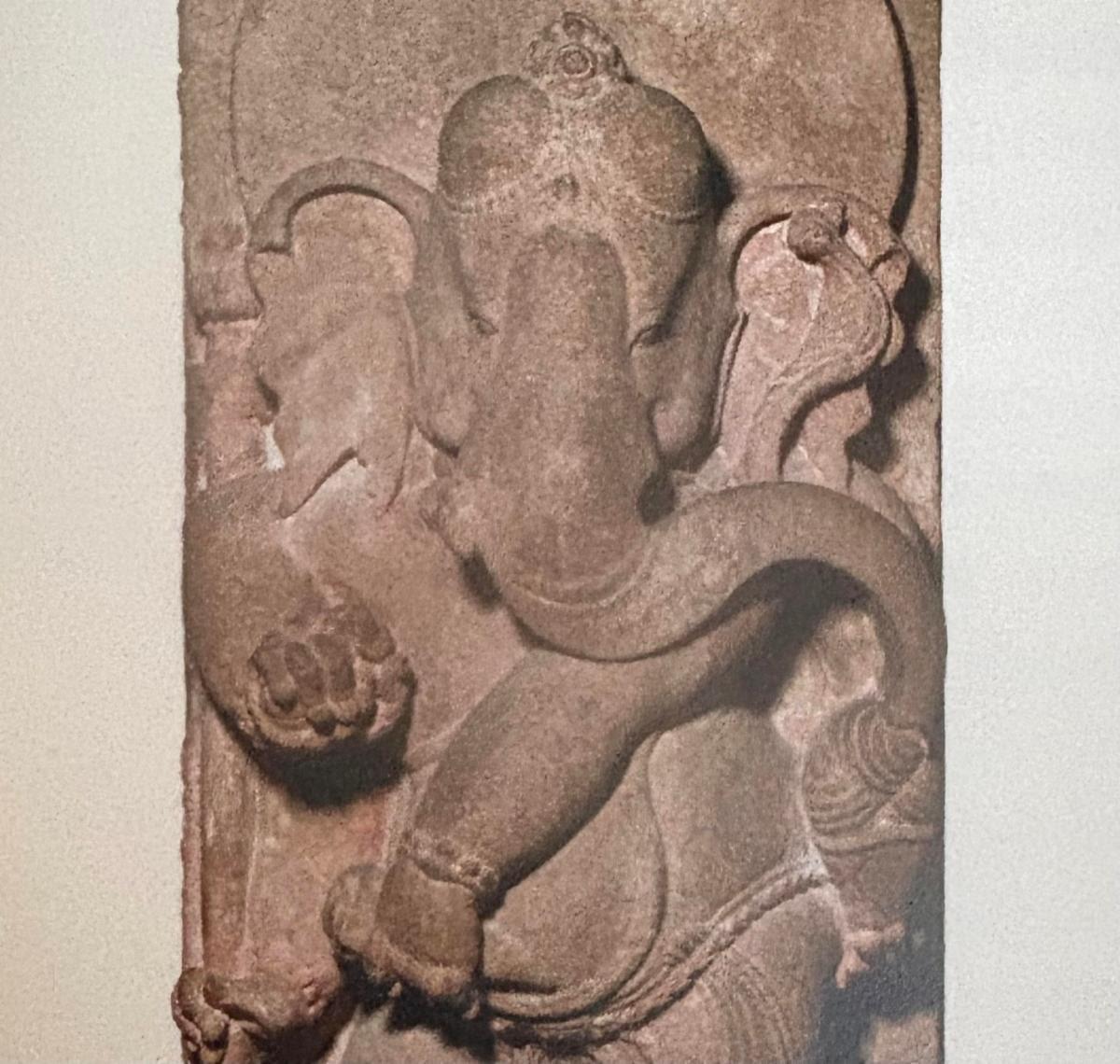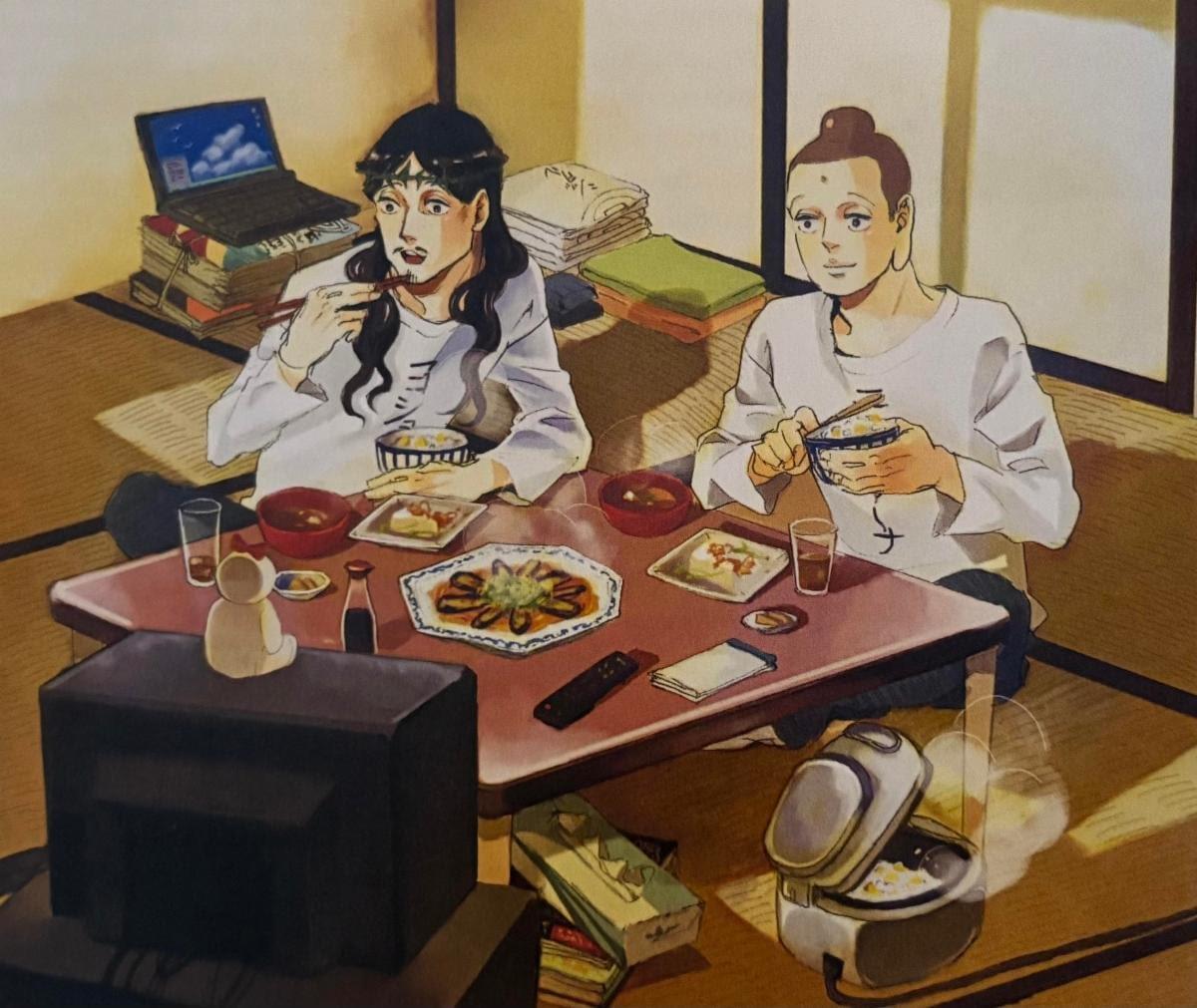Friends,
UNPACKING WELLNESS IN INDIA - via LONDON!
Episode 41
Location: London
If going to India in July is not for you, no problem! Enjoy a trio of quality Indian art shows in central London.
Hurry to catch my first suggestion, it closes this Sunday, 6 July and has free curator-led walk-throughs on 4 July 1-2.30pm and 5 July 4-5pm.
Called Feast, Melody and Adornment: The Art of Pichvai, more than 500 paintings, large and small, fill the Mall Galleries. They are inspired by the traditional temple cloth-paintings displayed behind the image of Shrinathji (an incarnation of Krishna), especially in the god’s principal shrine at Nathdwara (founded 1672), a short drive north from Udaipur. Pooja Singhal, inspired by Amit Ambalal's great pichvai collection in Ahmedabad, has used her business acumen to found a thriving atelier of more than 20 artists in Udaipur. Reviving the authentic craft skills and encouraging both traditional designs and new interpretations, these pichvais for today maintain their core values of vivid colour, often symmetric design and the power of repeated pattern - as in the painting above.
Find more about the show here
And about Singhal’s Pichvai atelier in Udaipur here
You have until 27 July to enjoy the next show during a stroll through Kensington Gardens and Hyde Park: Arpita Singh: Remembering at Serpentine North Gallery, near Henry Moore’s stunning white ‘The Arch’ (1979-80).
A joyful show just right for its summertime park setting, this is Singh’s first solo exhibition outside India. Born in Bengal, her work is in major Indian museums who have lent generously to the show, in particular Bangalore’s MAP. Selecting pieces from 60 years of creativity inspired by her own country’s cultures as well as global upheavals, Singh often returns to the female dilemma in its many forms which she exposes in her figurative and abstract works. Don’t miss the watercolours filling the inner gallery.
Find more about the show here
Finally, ‘Ancient India Living Traditions’ is at the British Museum until 19 October – a good thing as you'll need to plan enough time time to take in each piece.
Although the show is easy to find (ground floor) and not too big (180 objects in two galleries), each exhibit is superb (especially the sculptures). Also, while the bulk of the exhibits are BM pieces, many have not been on display recently. The aim is to leap back some 2,000 years to explore the origins of Hindu, Jain and Buddhist thought and artistic expression whose common foundations were the long-existing nature worship, and see how this developed into formal iconographies that spread through the world and continue to have vibrant lives today. It’s a huge ambition, and it works. Setting the tone for this landmark show, a gloriously cheeky Ganesha welcomes visitors while gobbling sweets and dancing playfully - see the image below.
Find more about the show here

At the Pichvai show, this large contemporary painting lends new wit to a favourite theme, depicting Shrinathji's large haveli (temple) as a flattened aerial view, as if seen from a drone. See how many darshans (viewings) of the deity you can find - and the upside down cow.

Lucky London that Arpita Singh's first solo show outside India is here - although it seems shamefully late given she's was a pioneer of post-independence movements and is today one of India's leading artists. Her twelve signs of the zodiac encapsulate much of her essence, in particular her lyricism and her love of Bengali folk tales and Indian storytelling.

The British Museum welcomes visitors with this terrifically spirited Ganesha made of sandstone in northern India around 750. The show demonstrates the continuous living traditions of Hindus, Jains and Buddhists, making this sculpture as relevant today as it was when it was carved - visitors to the BM often leave coin offerings beneath a Ganesha image.

The BM show displays with refreshing clarity India's home-grown Hindu, Jain and Buddhist ideas. This serenely happy Jain thirthankara was made around 200-300 in Mathura, between today's Delhi and Agra. He is a ford-crosser who leads others to moksha (liberation), and has a lotus-petal halo of purity and the sacred srivatsa (the endless knot of wisdom) on his chest.

From Indian beginnings, the BM show expands across Asia and races up to today. Nakamura Hikaru's 2011 print shows the Buddha sitting with Jesus to share a meal and watch TV. It is part of Hikaru's manga series Seinto Oniisan (Saint Young Men) - see how the Buddha keeps his three identifying marks from the earliest known images of him: cranial protuberance, elongated earlobes and forehead mark.
See previous episodes here
To be constantly amazed by India, follow me on Instagram here
To start planning your trip or join a small group toour visit my website heree
Learn more about my team in India, Quo Vadis, here